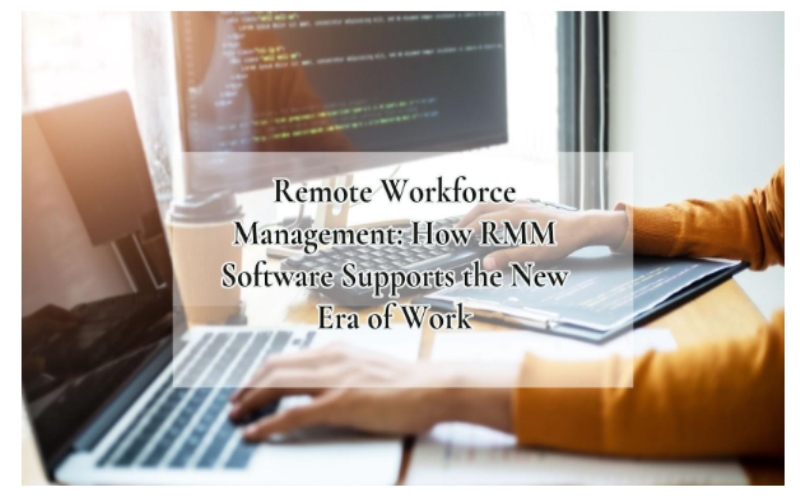In today’s increasingly interconnected world, remote work has become more prevalent than ever. Remote Workforce Management (RWM) refers to the processes and technologies that organizations employ to effectively manage employees who work remotely. This includes aspects such as communication, collaboration, monitoring of employee productivity, and security.
With globalization and advancements in technology making remote work feasible for more businesses, the number of remote employees has grown significantly in recent years. A 2021 study found remote work has grown by over 216% since 2005.
Working remotely provides benefits like greater flexibility, expanded talent pools, and potentially reduced real estate costs for organizations. However, it also presents challenges such as communication barriers, reduced visibility, and concerns about data security. This makes RWM an important consideration for companies with remote staff.
Evolution of Remote Workforce Management
Though remote work is not an entirely new concept, its widespread adoption has drastically increased over the past few years. Several factors have accelerated this growth, including:
- Globalization: As businesses expand globally, they are better able to utilize talent across geographic boundaries. This makes having remote employees more practical.
- Improved Technology: Tools like video conferencing, cloud-based collaboration platforms, and RMM software have made it easier for remote teams to communicate and stay aligned.
- Demand for Flexibility: Employees increasingly expect more flexibility from potential employers. Offering remote work options has become important for attracting top talent.
The COVID-19 pandemic also accelerated the adoption of remote work significantly, demonstrating to many businesses that it can be successfully implemented. This cultural shift means even more organizations are now embracing hybrid or fully remote models.
Role of RMM Software in Remote Workforce Management
Remote Monitoring and Management (RMM) software serves as a linchpin in navigating the intricacies of managing a remote workforce. In the contemporary landscape of dispersed teams and decentralized work environments. Best RMM software emerges as a cornerstone solution. By granting organizations the capability to oversee and regulate their IT infrastructure, devices, and endpoints from a remote vantage point, RMM software embodies efficiency and efficacy in remote workforce management.
Addressing Remote Challenges
The rise of remote work signifies a new era in organizational dynamics, characterized by geographical dispersion and digital connectivity. However, with this transition comes a myriad of challenges, chief among them being the management of remote resources. RMM software emerges as a solution for these challenges, providing organizations with the means to overcome physical barriers and exert control over their digital ecosystem.
Real-Time Visibility
At the heart of RMM software lies its ability to furnish organizations with real-time visibility into the performance and security metrics of remote systems. Gone are the days of conjecture and conjecture; RMM software empowers decision-makers with actionable insights derived from comprehensive data analytics. This real-time visibility not only facilitates proactive management but also enables swift intervention in the event of anomalies or security breaches.
Proactive Management
The reactive paradigm of traditional IT management no longer suffices in the fast-paced realm of remote work. RMM software heralds a shift towards proactive management, wherein potential issues are identified and addressed before they escalate into full-blown crises. By utilizing automated monitoring, alerts, and predictive analytics, RMM software empowers organizations to stay ahead, minimizing downtime and optimizing operational efficiency.
Seamless Troubleshooting
In the realm of remote work, the luxury of on-site technical support is often a distant dream. Herein lies the value proposition of RMM software, which equips organizations with the tools needed to troubleshoot and resolve issues remotely. Whether it’s software updates, system optimizations, or security patches, RMM software streamlines the troubleshooting process, ensuring minimal disruption to remote operations.
Challenges Faced in Remote Workforce Management
Despite its many benefits, remote work also presents unique challenges for organizations. One of the primary challenges is communication barriers. Without face-to-face interaction, remote teams may struggle to collaborate effectively and maintain a sense of camaraderie. Additionally, monitoring productivity and ensuring data security are major concerns for businesses with remote employees.
Implementing RMM Software for Remote Workforce Management
In this table, we will explore the key challenges organizations face when implementing Remote Monitoring and Management (RMM) software for remote workforce management, along with corresponding best practices to address these challenges effectively.
| Challenges | Best Practices |
| Communication Barriers |
|
| Monitoring Productivity and Data Security |
|
| Ensuring Effective Collaboration among Remote Teams |
|
| Managing Remote Workforce Efficiency |
|
| Integrating RMM Software with Existing Systems |
|
Conclusion
Remote workforce management is essential for modern organizations looking to adapt to the changing nature of work. RMM software plays a vital role in supporting remote work by addressing communication, productivity, and security challenges. By embracing RMM solutions and implementing best practices, businesses can effectively manage their remote workforce and thrive in the new era of work.
FAQs
- What is remote workforce management?
Remote workforce management refers to the processes and technologies used by organizations to effectively manage their remote employees, including communication, collaboration, monitoring, and security.
- How does RMM software help in remote workforce management?
RMM software allows organizations to remotely monitor and manage their IT infrastructure, devices, and endpoints, providing real-time visibility into performance and security for remote systems.
- What are the key features of RMM software?
Key features of RMM software include remote monitoring, patch management, automated alerts, remote control, and endpoint security.
- Is RMM software suitable for all types of businesses?
While RMM software can benefit businesses of various sizes and industries, it may be particularly valuable for organizations with remote or distributed workforces.
- How can companies ensure data security while using RMM software?
Companies can ensure data security while using RMM software by implementing best practices such as encryption, multi-factor authentication, and regular security updates.





